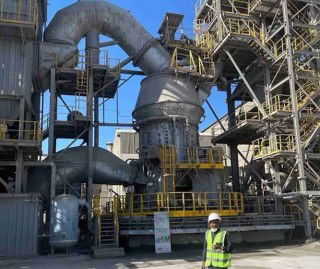Hima Cement (LafargeHolcim Group) has announced that it is seeking to invest US$40m to establish a greenfield grinding station in Tororo, eastern Uganda. However, this is only the first of a series of capacity building projects which the company says it will embark upon.
Additionally, Hima Cement is investigating limestone reserves in northeastern Uganda to support a possible future clinker plant, while downstream operations of ready-mix production in Kigali are due to be launched next month and further ready-mix and aggregate sites are planned in Uganda and Rwanda, respectively.
The Kasese district has also been mobilised to grow more coffee so that Hima Cement is less dependent on the husks being imported from Tanzania and the Democratic Republic of Congo for its alternative fuel needs. The company is currently using 57 per cent biomass power in its operations and the aim is to stop using heavy fuel oil in the future.
"We are very positive about the long-term prospects of the cement industry in Uganda; and LafargeHolcim is keen to solidify its position in the region as the leading producer of building solutions providing its customers with innovative value adding propositions," said Daniel Pettersson, Hima Cement Ltd Country CEO.
Competition
However, the fight for market share has never been fiercer. Rival company National Cement (Devki Group) of Kenya is investing KES18.5bn (US$199m) for a new 1Mta integrated cement plant in Uganda that is scheduled to open at the end of 2016.
The arrival of Kampala Cement at Namataba in 2015 has also given a shake-up to Hima Cement and Tororo Cement who are the established adversaries. The new cement producer is part of Multiple Industries Ltd, and is estimated to have already gained a 10 per cent market share in its first year with its main brands being Nyati, Kifaru and Ndovu. Cement distribution is seen as a vital factor in the battle to win customers and Kampala Cement has invested in a fleet of 28-32t cement trailers that can each transport 500 bags of cement. The company collects raw materials from Sirocco and Karamoja and cement is produced at the 1Mta capacity Namataba factory, near Mukono on the Sezibwa river.
Moreover, Tororo Cement announced in July this year that it had plans to expand its cement capacity from 1.8Mta to 3Mta with new grinding capacity and cement storage silos.
Uganda also has a further 1Mta cement factory at Lorukumoi village in the northeast of the country where Moroto Cement has operated since 2012.
Trade
Meanwhile, the government has made imports less profitable in its 2016-17 budget in June by increasing the duty from 25 to 35 per cent. Ugandan cement exports have also found their way to Rwanda, where they have overtaken Indian supplies and are now second in volume to Chinese sources, reports the National Institute of Rwanda.

Hima Cement emerges as leading contender to acquire Khayah Cement
Hima Cement , the East African producer owned by Uganda’s Sarrai Group, has emerged as the lead...